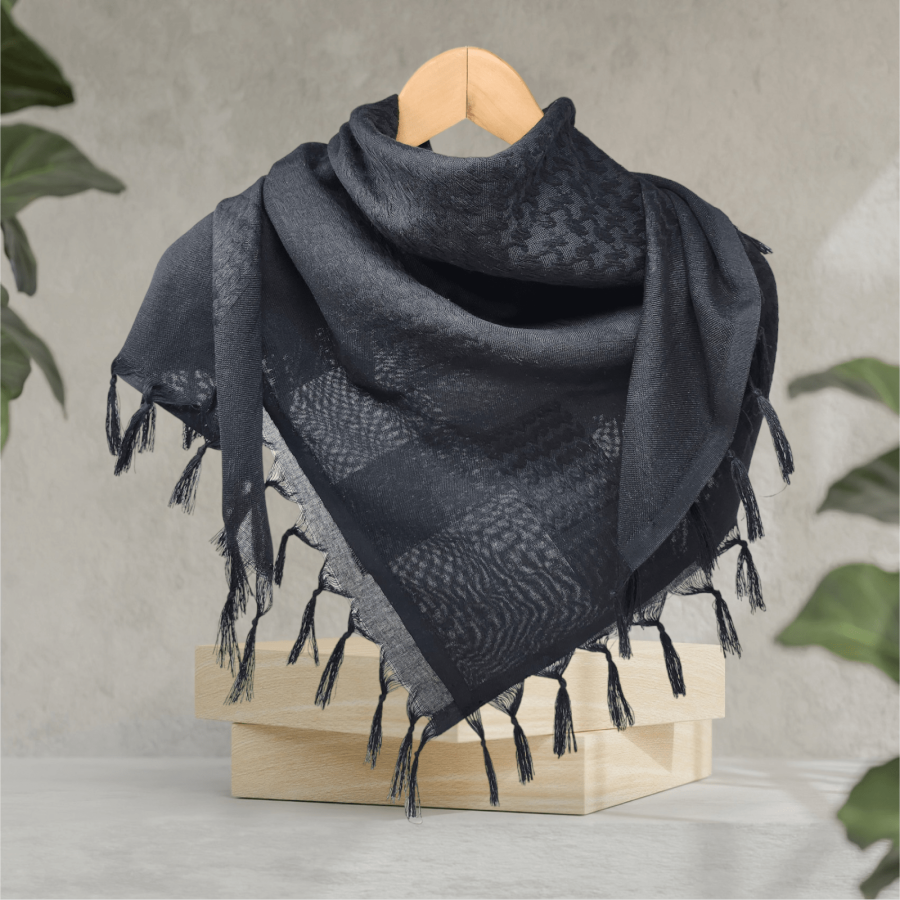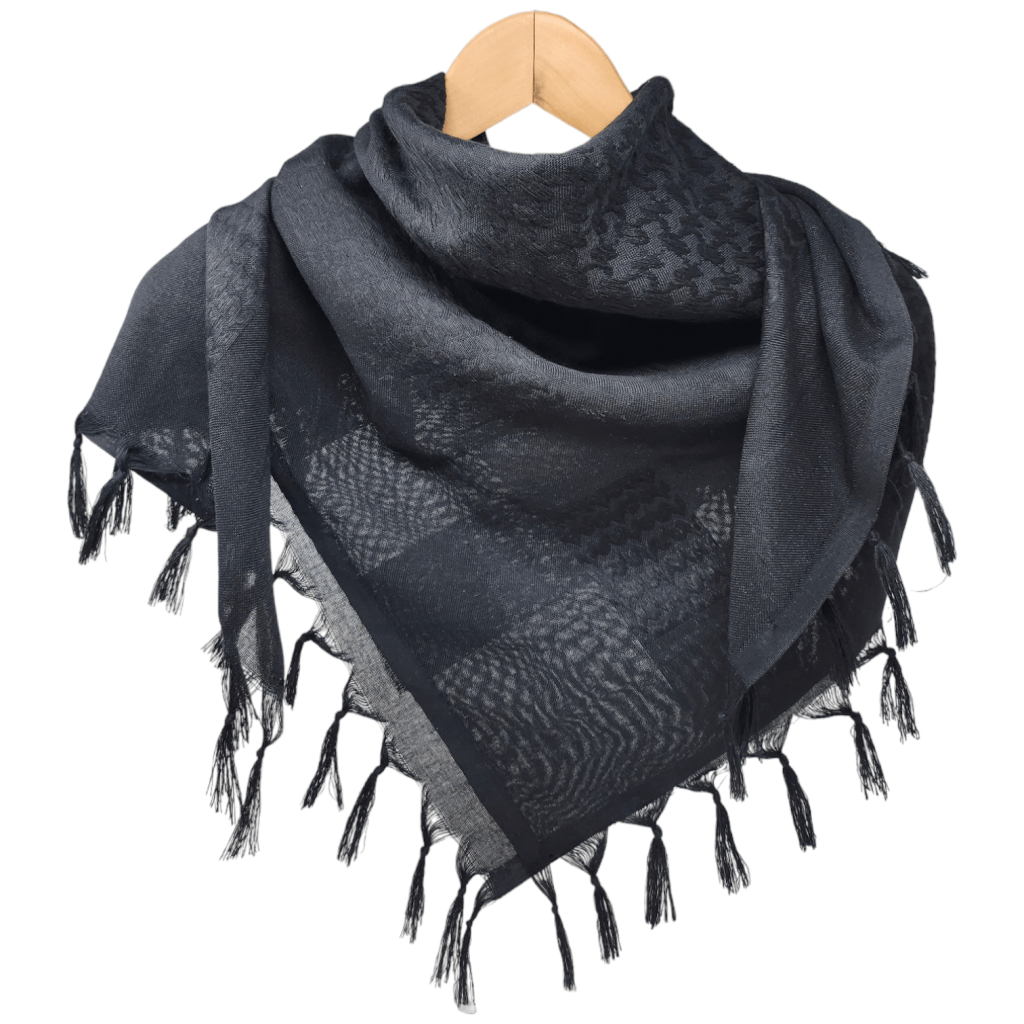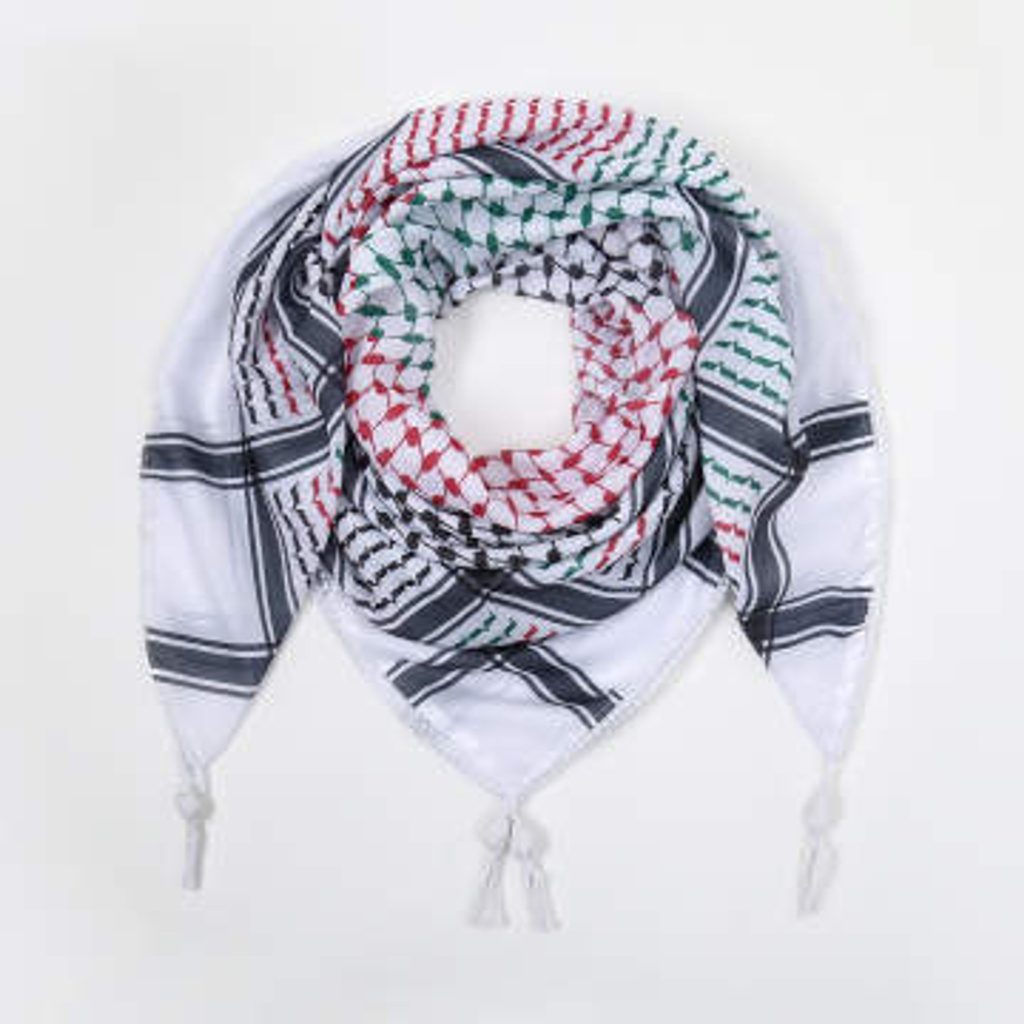Introduction
The Palestinian scarf, known as the keffiyeh (or kufiya), is far more than a mere article of clothing; it is a vivid cultural symbol with profound political implications. Worn traditionally by men and often adopted by women in recent years, the keffiyeh reflects the struggles, identity, and resilience of the Palestinian people. Its significance extends beyond the borders of Palestine, resonating on a global scale as a representation of resistance and solidarity.
The Palestinian scarf, also known as the keffiyeh or ghutrah, is more than just a piece of fabric; it embodies a rich tapestry of cultural, historical, and political narratives. Often recognized by its distinctive black-and-white or red-and-white checkered patterns, the keffiyeh has transcended its original purpose as a piece of traditional attire and has evolved into a potent symbol of Palestinian identity and resistance. This article delves into the historical significance, cultural implications, and contemporary relevance of the Palestinian scarf as a statement of identity.

Historical Background
The keffiyeh has ancient roots, its designs and fabrics varying across regions and cultures in the Middle East. Originally worn by men in rural areas, it functioned primarily as protection against the harsh sun and dusty winds, made from lightweight cotton or wool. Over time, the black-and-white or red-and-white patterns became emblematic of specific tribes or regions.
In the mid-20th century, during the rise of Palestinian nationalism and after the 1948 Nakba (Catastrophe), which led to the mass displacement of Palestinians, the keffiyeh transformed from a traditional garment into a potent symbol of resistance. Yasser Arafat, the leader of the Palestine Liberation Organization (PLO), often donned the scarf, embedding it deeply within the political narrative of the Palestinian struggle for statehood. Arafat’s use of the keffiyeh in his public appearances nurtured its association with Palestinian identity and resistance to Israeli occupation.
Cultural Significance
The keffiyeh’s patterns are rich with meanings. The black-and-white version, known as the traditional Palestinian keffiyeh, is often viewed as a representation of the Palestinian people as a whole. Its checkerboard pattern, originally associated with the farming community, emphasizes a connection to the land and agrarian roots. Similarly, the red-and-white version is linked to certain regions and communities within the Arab world, showing how diverse identities can be unified under one shared symbol.
Wearing the keffiyeh now evokes a sense of pride among Palestinians and allies alike, serving as an assertion of identity in the face of geopolitical struggles. In recent years, the keffiyeh has gained popularity beyond the borders of Palestine, being embraced as a global symbol of solidarity with oppressed peoples. Activists worldwide wear it as a statement against injustice, echoing solidarity with the Palestinian cause.
Political Implications
The political implications of the keffiyeh are significant. On one level, it serves as a protest against occupation and oppression. During the First and Second Intifadas, the keffiyeh became a visual cornerstone of resistance, intertwined with protests, rallies, and acts of civil disobedience. The keffiyeh is often seen during demonstrations, symbolizing defiance against the Israeli state’s policies.
On an international level, the keffiyeh has become a symbol of the broader struggle against imperialism and colonialism. In many protest circles, it is worn by activists advocating for human rights, environmental justice, and social equality, emphasizing the intersectionality of various struggles across the globe. This transformation into a universal symbol of resistance has further deepened its political resonance, connecting the Palestinian cause with wider movements for justice.
Contemporary Use and Reinterpretation
In contemporary fashion, the keffiyeh has been appropriated by various designers and fashionistas, often stripped of its political significance. While this has led to increased visibility and awareness of Palestinian culture, it also raises concerns about cultural appropriation and the trivialization of the struggles associated with the keffiyeh. When detached from its historical and sociopolitical context, the keffiyeh risks becoming just another trendy accessory rather than a powerful emblem of identity and resistance.
Many Palestinians continue to advocate for the conscious use of the keffiyeh, emphasizing its origin and significance as a means of preserving cultural heritage in the face of global commodification. By wearing the keffiyeh with intention and awareness, individuals can reclaim its value as a political symbol and honor the narratives it represents.

Historical Background
The keffiyeh’s origins can be traced back to centuries ago in the Arab world,. Where it served primarily as practical headwear for protection against the harsh desert climate. Traditionally made from cotton or wool, its primary function was to provide shade and safeguard against dust and heat. However, over time, it became intertwined with the socio-political landscape of the region, particularly during the early 20th century.
As the Palestinian national consciousness began to take shape during the British Mandate and the subsequent rise of nationalism. The keffiyeh emerged as an emblem of solidarity among Palestinians. In the 1930s, it became a staple in the attire of Palestinian farmers and laborers, symbolizing their connection to the land and struggle against colonial powers. Its popularity soared during the 1960s with the rise of the Palestine Liberation Organization (PLO), as iconic figures like Yasser Arafat donned the scarf. Further solidifying its status as an emblem of resistance.
Cultural Significance
The patterns themselves carry distinct meanings and regional variations, highlighting the diversity within Palestinian society.
For many Palestinians. Wearing the keffiyeh serves as a way to express pride in their heritage and connection to their homeland. During cultural events, protests, or everyday life, the scarf acts as a vehicle for cultural expression and collective memory. It signifies resilience in the face of adversity, reminding wearers of their shared history and struggle.
The Keffiyeh in Contemporary Context
In recent years, the keffiyeh has gained international recognition, transcending geographical and political boundaries. Fashion designers and brands have incorporated the motif into their collections, often stripped of its political connotations. While this can bring awareness to Palestinian culture, it also raises questions about appropriation and commodification. Critics argue that such commercialization can dilute its significance. Transforming a deeply rooted symbol of resistance into a mere fashion statement.
The keffiyeh also serves as a form of solidarity for many activists and allies of the Palestinian cause around the world. During protests and movements advocating for human rights. Individuals don the scarf as a sign of support, amplifying the voices of those who continue to face oppression. This gesture transcends language and culture, fostering a sense of global unity and solidarity against injustice.
The Emotional and Spiritual Dimensions
For many Palestinians, wearing the scarf represents a promise to preserve their identity, nurture their heritage. And remember the stories of those who came before them. It serves as a reminder of the ongoing struggle for justice and self-determination. Embodying the hopes and dreams of present and future generations.

Conclusion
The keffiyeh is not just a piece of fabric; it represents the aspirations, history, and resilience of the Palestinian people. From its traditional roots to its current status as a global symbol of resistance. The keffiyeh embodies the complex interplay between culture and politics. It serves as a reminder of the ongoing struggles faced by Palestinians. And the broader issues of justice and liberation that resonate worldwide.
Reverberating through fashion, protest, and identity. The keffiyeh continues to inspire solidarity and foster a sense of belonging among those who wear it. As it evolves in meaning and significance, it remains an essential emblem of hope, resilience. And the enduring quest for justice for the Palestinian people and oppressed communities around the world.
